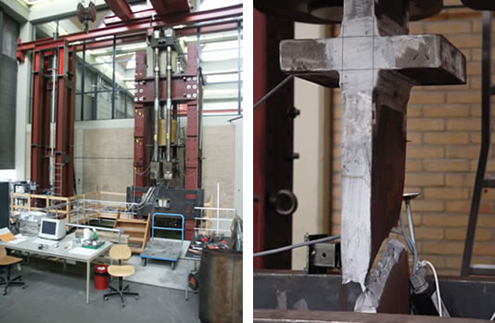Integrity of welded joints made of steel grades S690 and S1100
The interest for the application of steels with a very high yield and tensile stress, so called very high strength steel (VHSS), has been increased in recent years. In the test program described in this report we consider VHSS with a strength which lays a factor two to three higher then the maximum strength of the commonly used structural steels in the design codes. This increasing interest is based on economic benefits using VHSS. These benefits are due to weight reductions, which lead to reduce use of material and savings during fabrication (e.g. welding costs). Another aspect of this growing interest is the fact that using this type of VHSS in specific structures like very heavy lifting cranes, a really new scale of structure becomes possible. To achieve the same level of safety and comfort with the lightweight VHSS structures special attention has to be given to the fabrication and design of VHSS structures. In fabrication the welding and cold deformation of VHSS can lead to weld defects and material deterioration resulting in reduced safety of the structure. In design special attention has to be paid to the design of connections to avoid high stress concentrations and to achieve sufficient deformation capacity.

Publications
Kolstein, M.H., Dijkstra O.D., Bijlaard, F.S.K. (2006).
Integrity of welded joints made of steel grades S690 and S1100 In: Steel – a New and Traditional Material for Building, Dubina & Ungureanu (eds), Taylor & Francis Group, London, ISBN 0-415-40817-2
Dijkstra, O.D., Kolstein, M.H. (2006).
Integrity of welded joints made of steel grades S690and S1100 In: Steel – a New and Traditional Material for Building, Dubina & Ungureanu (eds), Taylor & Francis Group, London, ISBN 0-415-40817-2